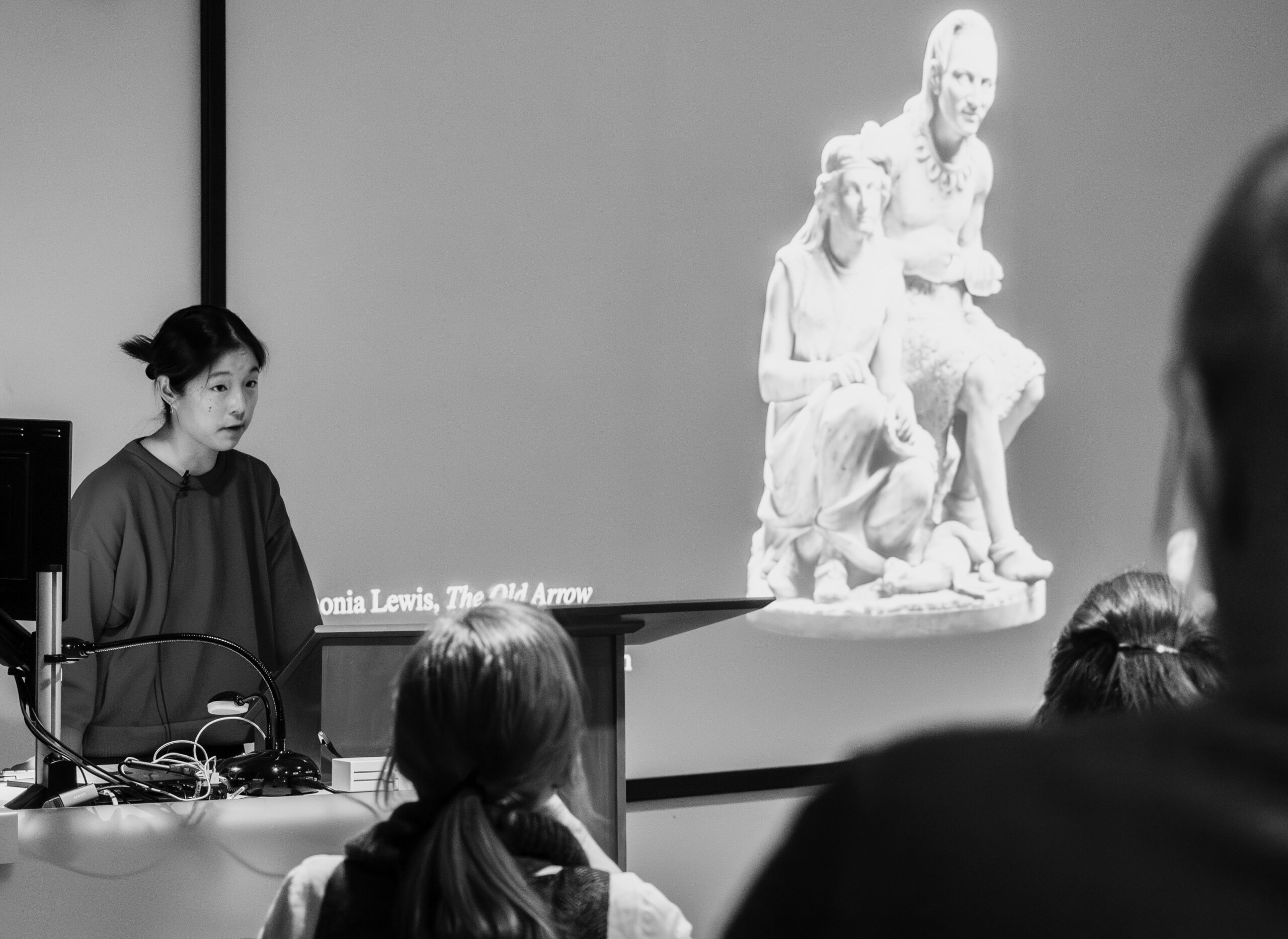Caitlin Beach on the sculptural protest of Edmonia Lewis
February 16, 2024
 Alex Spear
Alex SpearStudents, faculty and community members filed into the Beam Classroom last Thursday, February 8, as Caitlin Beach ’10 delivered a lecture on 19th-century sculptor Edmonia Lewis. Beach, now assistant professor of art history at Fordham University, guided the audience through Lewis’s education and career, emphasizing how the Black-Indigenous sculptor worked alongside Boston’s active antislavery community while the Civil War raged.
The event was sponsored by the Bowdoin College Museum of Art (BCMA) in conjunction with its recently opened exhibition, “The Book of Two Hemispheres: Uncle Tom’s Cabin in the United States and Europe,” which contextualizes the artistic response to onetime Brunswick resident Harriet Beecher Stowe’s famed antislavery novel.
The exhibition was curated by Postdoctoral Curatorial Fellow Sean Kramer, who worked to present the exhibition in a fashion that allows viewers to delve into the evolving historical context of slavery around the time Stowe wrote “Uncle Tom’s Cabin.”
Kramer explored the novel’s widespread acclaim after its publication with a focus on illuminating foreign interpretations and understanding. Overseas, distanced from slavery and the Civil War, interpretations of the novel shied away from the original activist purpose Stowe hoped to achieve, according to Kramer and historian Sarah Maza, who discussed the problematic reception “Uncle Tom’s Cabin” received in France in a lecture at the College last spring.
In Boston, where Lewis made a name for herself as a sculptor, many of her pieces circulated in active abolitionist communities and were used to help raise awareness for prominent activists like Robert Gould Shaw.
Mirroring the transatlantic dissemination of “Uncle Tom’s Cabin” just over a decade later; however, Lewis moved to Rome, Italy in 1866. It was during her time in Italy that she began photographing her sculptures in an attempt to bring her work to a wider audience.
“She used photography to sell her work. People could only buy a sculpture if they had money and maybe there’s only a hundred copies of a sculpture, but she would sell photographs of her work as well,” Beach said. “It becomes a way to further democratize her sculpture.”
It was this idea that resonated deepest with EJ Esmas ’27.
“[Photography] democratizes sculpture, it’s a way to divest the prestige and elitism of sculpture,” Esmas said. “You see so many artists today in such physical mediums like sculpture reacting to photography negatively.… It’s cool how Lewis navigates this, how she makes it her own.”
To Kramer, Lewis’s ability to claim both distributary power of her art through photography and her own individuality laid foundations for another connection to the current exhibition.
“The other parallel story, or even inverse story if you will, is what happens to Stowe herself,” Kramer said. “She becomes this sort of legendary figure… a fixture in American literary history as the author of ‘Uncle Tom’s Cabin’. So even though she had written many, many other works after that, and lived a very dynamic, complicated life, she gets pressed down to just the author of ‘Uncle Tom’s Cabin’.”
Despite her use of photography, Edmonia Lewis failed to completely escape becoming subsumed by misinterpretation: Some of her work sold in the United States was stripped of some of its democratic principles and abolitionist context, appraised for its beauty rather than its activist messaging.
BCMA Co-Director Anne Collins Goodyear said that the exhibition and events like Beach’s lecture aim to recenter work like Lewis’s in a meaningful and appropriate setting.
“It is exciting to see the fashion in which our collection and programming sheds light on historically underrepresented stories,” she said.

Comments
Before submitting a comment, please review our comment policy. Some key points from the policy: